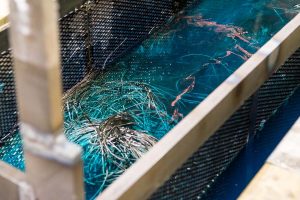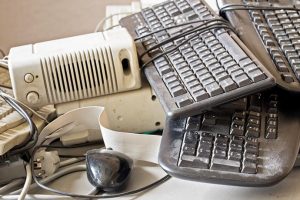
Tom Bolon
Let me cut to the chase: There is plenty of capacity at lead smelters in North America to fully recycle the lead from collected CRT glass. Continue Reading
 The online E-Scrap News article appearing last week entitled “Can export incentives help clean up Agbogbloshie?” announces a new program to improve the infamously polluted and polluting scrap recycling operations in the Agbogbloshie area of Accra, Ghana.
The online E-Scrap News article appearing last week entitled “Can export incentives help clean up Agbogbloshie?” announces a new program to improve the infamously polluted and polluting scrap recycling operations in the Agbogbloshie area of Accra, Ghana.

A Samsung lithium-ion battery manufacturing subsidiary is exploring investment in recycling companies to recover cobalt and other materials, as demand climbs for the metals.

Credit: Maurizio Targhetta
Market analysts say 2018 could be a golden year – or perhaps a silver and platinum one – for the prices of precious metals recovered from scrap electronics.

Credit: Joao Estevao A. de Freitas
The value of recovered circuit boards has risen in recent months, much to the delight of e-scrap reclaimers.

Credit: Pekka Niemi/Kuusakoski
Finnish recycling company Kuusakoski has refined its method for processing a key component of MRI machines and is now producing distinct streams of high-grade metals.

Credit: Gorodenkoff/Shutterstock
The recycling industry has not escaped the fallout from a tight trucking market. Recent regulatory movement and a growing driver shortage have contributed to rising freight costs, just months after extreme weather impacted the shipping sector.

Jim Levine and Neil Peters-Michaud at E-Scrap 2017. Photo credit: BrianAdamsPhoto.com
As commodity prices fluctuate and reuse options proliferate, many e-scrap operators regularly confront a key question: shred or refurb? A panel at last year’s E-Scrap 2017 in Orlando discussed the multitude of profitability factors that go into answering that question.
 A Houston company’s rare earth element recovery technologies could mean another future revenue stream for electronics processors.
A Houston company’s rare earth element recovery technologies could mean another future revenue stream for electronics processors.

With the value of e-plastics plummeting and a major export market crumbling, North American firms are scrambling to identify ways to manage the material.

